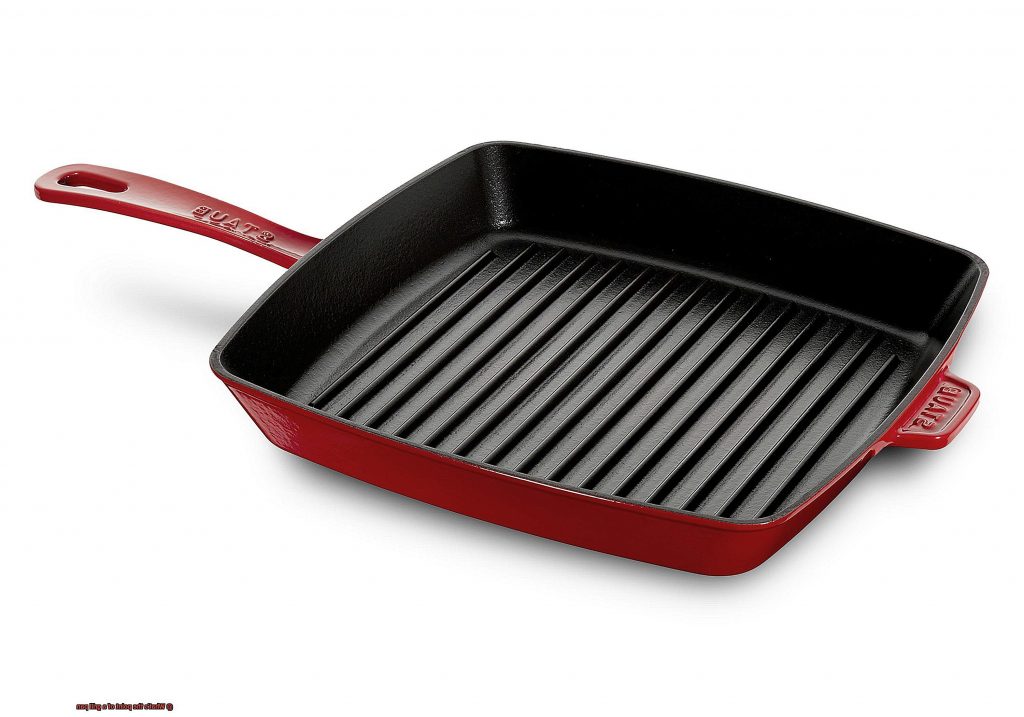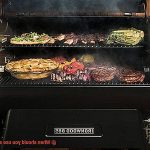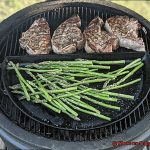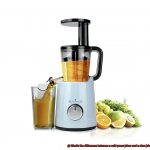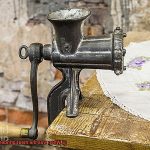As the sun starts to shine and the weather warms up, many of us start dreaming about outdoor grilling. But what if you don’t have a backyard grill? Or what if the weather doesn’t cooperate? That’s where a grill pan comes in handy.
A grill pan is like having an indoor grill at your fingertips. It’s a kitchen appliance that lets you achieve those mouth-watering grill marks on your food, even when cooking indoors. The pan has raised ridges on its surface that mimic grill grates, elevating your food and allowing any fat to collect in the grooves. This results in a healthier and more flavor-packed meal.
But there’s more to it than just mimicking an outdoor grill. A grill pan is perfect for cooking foods that would otherwise slip through grates, like shrimp or chopped vegetables. And if you’re an urban dweller without space for an outdoor grill, a grill pan is the perfect solution.
Whether you’re craving juicy burgers or perfectly grilled veggies, a grill pan is an essential tool for indoor cooking. It’s an easy and convenient way to get that delicious grilled flavor without leaving the comfort of your own home. So go ahead and invest in one – your taste buds will thank you.
Contents
What is a Grill Pan?
Grill pans come in various shapes and sizes, including square, circular, and rectangular. They are typically made of cast iron, aluminum, or stainless steel and feature raised ridges or bars that create those coveted grill marks on your food. Cast iron is particularly popular due to its heat retention capabilities, ensuring your food cooks evenly and thoroughly.
Aside from its aesthetic benefits, a grill pan offers a convenient way to cook grilled food indoors. It’s easy to use on stovetops and can be cleaned with just soap and water. Plus, it’s perfect for cooking delicate items like shrimp or asparagus that may fall through the grates of an outdoor grill.
Grill pans also offer a wide range of culinary possibilities – from vegetables to meat, fish, and even fruits. And let’s not forget about those beautiful grill marks. They add visual appeal to your dishes and make for great social media photos or impressive presentations when serving guests.
Benefits of Using a Grill Pan
Not only is it versatile, but it also offers numerous benefits over traditional grilling methods. Let’s take a closer look at some of the key reasons why you should consider using a grill pan:
- Year-Round Grilling: One of the most significant advantages of using a grill pan is that you can enjoy grilled food indoors all year round. Whether it’s raining, snowing, or too cold outside, you can still savor the flavor and appearance of perfectly grilled meats, vegetables, and seafood.
- Healthier Cooking: With a grill pan, you can cook healthier meals without sacrificing flavor. The ridges on the surface of the pan help drain off excess fat while retaining the juices and flavors of your food. This means you can enjoy your favorite grilled dishes without worrying about the extra calories.
- Versatile Cooking: A grill pan is a versatile tool that can be used to cook a wide range of foods. From meats to vegetables to fish and seafood, a grill pan is perfect for cooking any meal that requires a smoky grilled flavor. Plus, you can use it for sautéing and roasting too.
- Beautiful Grill Marks: One of the most significant advantages of using a grill pan is the beautiful grill marks it creates on your food. These marks not only look great but also add texture and enhance the taste of your dishes. You can achieve perfectly seared steak or charred vegetables with ease.
- Easy to Clean: Most grill pans are made from non-stick materials, which makes them easy to clean after use. Unlike outdoor grills, there’s no need to spend hours scraping off burnt-on residue. A simple wash with soap and water is all that’s needed to keep your grill pan looking like new.
Different Types of Grill Pans
Grill pans are a versatile and convenient cooking tool for those who love the taste of grilled food but don’t have access to an outdoor grill. However, with so many different types of grill pans available in the market, it can be challenging to know which one to choose. In this article, we will explore the various types of grill pans and their unique features and benefits.
Cast Iron Grill Pans
Cast iron is a popular material used for grill pans due to its ability to retain heat for a long time, making it ideal for high-heat cooking. Cast iron grill pans are perfect for searing meat and creating those sought-after grill marks that give food that charred flavor. They also provide a natural non-stick surface when seasoned properly. However, they can be heavy and require more maintenance than other types of grill pans.
Non-Stick Grill Pans
Non-stick grill pans have a coating that prevents food from sticking to the surface. This type of grill pan is perfect for grilling delicate foods like fish or vegetables that might otherwise stick to a cast iron pan. Non-stick grill pans are also easier to clean than cast iron pans since food doesn’t stick to the surface as easily. However, they may not be suitable for high-heat cooking, and the non-stick coating can wear off over time.
Stainless Steel Grill Pans
Stainless steel grill pans are less common than cast iron and non-stick pans but offer their own unique benefits. Stainless steel heats up quickly and evenly, making it great for searing meat or cooking vegetables. They also don’t require seasoning like cast iron pans do and are typically dishwasher safe. However, they may not retain heat as well as cast iron and may not provide the same level of flavor.
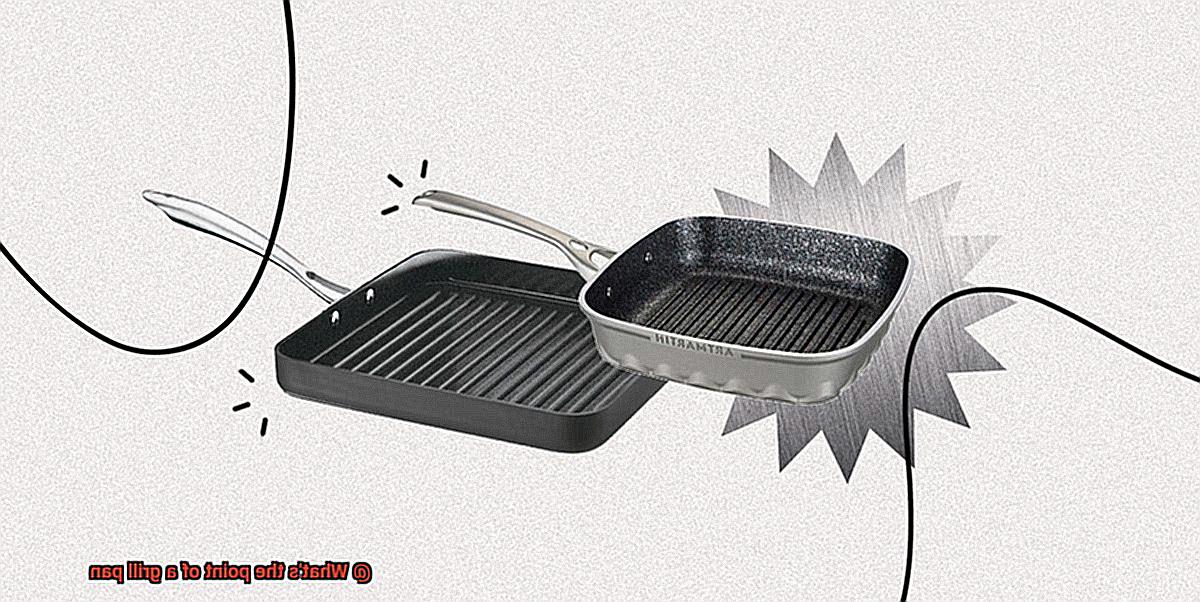
Electric Grill Pans
Electric grill pans have built-in heating elements that allow you to control the temperature easily. These types of grill pans are convenient because they don’t require an external heat source like a stove or grill. They are perfect for those who don’t have access to an outdoor grill or who want to enjoy grilled food all year round. However, they may not provide the same level of flavor as outdoor grilling and may take longer to heat up.
Advantages of Using a Grill Pan
The trusty grill pan is here to save the day. As an expert in the culinary world, I’m here to share with you the many advantages of using a grill pan.
Firstly, let’s talk about those beautiful grill marks. We all know that seeing perfectly spaced lines on our food is a thing of beauty. But did you know that these marks also add flavor and texture to your meal? With a grill pan’s raised ridges, you can achieve those coveted grill marks every time, making your food look and taste absolutely delicious.
But it’s not just about aesthetics – a grill pan also allows you to cook foods that would otherwise fall through the grates of a traditional grill. Delicate fish and seafood, small veggies like cherry tomatoes and mushrooms – these items can be cooked to perfection on a grill pan without fear of falling through the cracks.
One of my favorite advantages of using a grill pan is that it allows you to cook indoors when grilling outside isn’t an option. This is especially useful for those cold winter months or for apartment dwellers who don’t have access to outdoor space. A grill pan can be used on any stovetop, making it a versatile tool in any kitchen.
But wait, there’s more. Using a grill pan is also a healthier alternative to traditional grilling methods. The raised ridges allow excess fat and oil to drain away from the food, reducing the overall calorie count and making it a healthier cooking option.
In conclusion, there are numerous advantages to using a grill pan in your cooking routine. Here are just a few reasons why this versatile tool is a must-have for any home cook or professional chef:
- Beautiful grill marks add flavor and texture to your meals
- Cook delicate foods that would otherwise fall through the grates of a traditional grill
- Cook indoors during colder months or in apartments without outdoor space
- Healthier cooking option with excess fat and oil draining away from the food
Disadvantages of Using a Grill Pan
Grill pans have become a must-have item in every kitchen, offering a convenient way to prepare delicious grilled food indoors. However, before you rush out to buy one, it’s important to be aware of the downsides of using a grill pan.
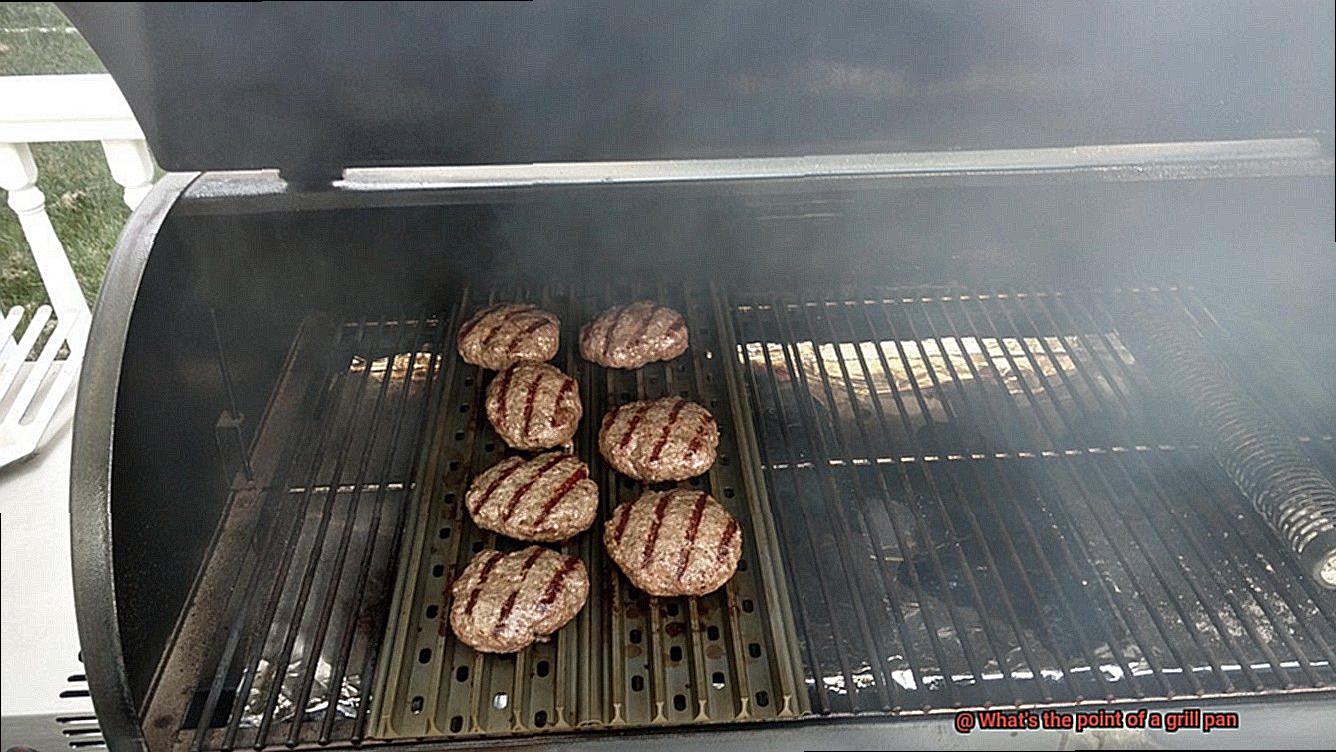
First and foremost, cleaning a grill pan can be a daunting task. Its ridges trap food particles and grease, making it challenging to scrub clean. If not cleaned properly, the pan can develop a residue that affects the taste of future dishes cooked on it. So, unless you have the patience and time to spare for cleaning, think twice before investing in a grill pan.
Another disadvantage of using a grill pan is that it doesn’t provide even heat distribution like a traditional grill. Consequently, you may end up with hotspots on your food or uneven cooking. Additionally, because the ridges on the pan prevent direct contact between the food and the heat source, cooking on a grill pan may take longer than on a traditional grill.
Finally, while a grill pan can give your food those coveted grill marks, it may not deliver the same smoky flavor as true outdoor grilling. This is because grill pans don’t allow for the same level of smoke and char that traditional grills provide.
How to Use a Grill Pan Properly?
Grill pans are a popular kitchen tool that can help you achieve the same sear marks and charred flavor as a traditional outdoor grill. However, using a grill pan properly can be a bit tricky if you’re not familiar with its features and functions. To help you get the most out of your grill pan, here are five sub-sections to explain how to use a grill pan properly for optimal grilling results:
Choose the Right Type of Grill Pan
The first step in using a grill pan properly is to choose the right type of pan for your needs. Cast iron is the most traditional and durable option, while non-stick coatings are easier to clean but may not last as long. Stainless steel is another option, offering durability and even heating. Consider your cooking needs and preferences before making your selection.
Properly Season Your Grill Pan
Before using your grill pan for the first time, it’s important to season it properly to prevent sticking and enhance flavor. This involves coating the pan with oil and heating it on the stove until it smokes, then letting it cool and wiping off any excess oil. Repeat this process as necessary to maintain the seasoning.
Preheat Your Grill Pan
To ensure optimal cooking results, preheat your grill pan over medium-high heat for at least 5 minutes until it’s hot enough to sear your food. You can test the temperature by sprinkling a few drops of water on the surface – if they sizzle and evaporate immediately, the pan is ready.
Avoid Overcrowding the Pan
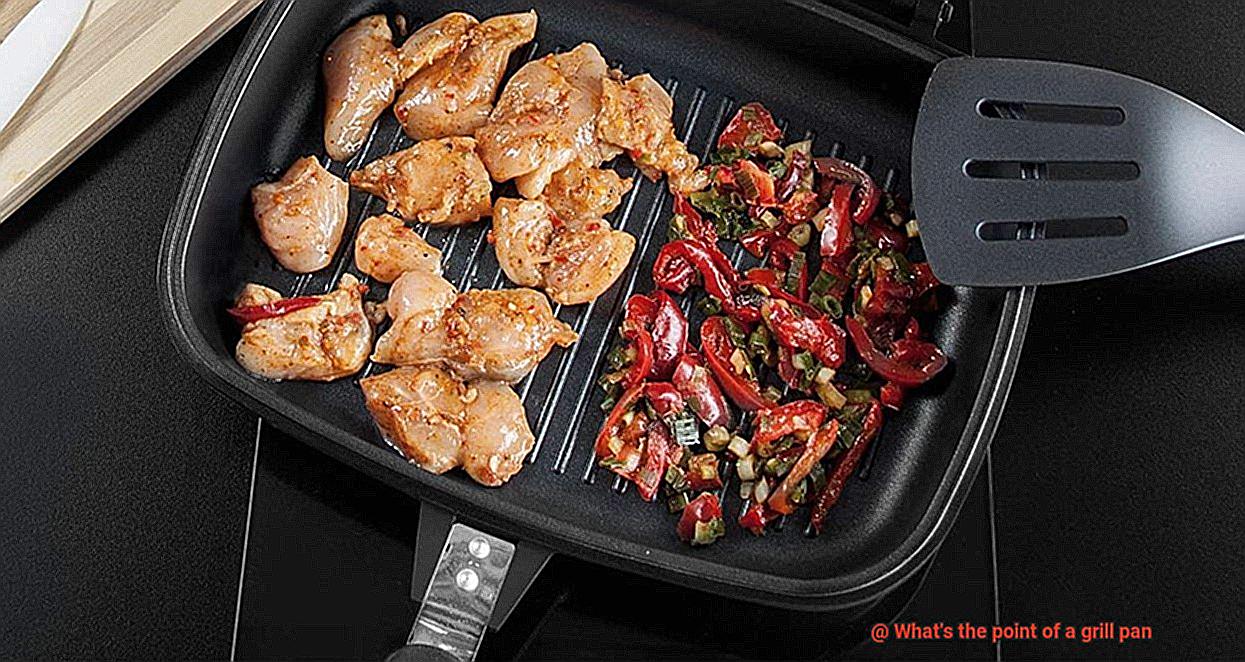
One common mistake when using a grill pan is overcrowding the surface with food. This can prevent proper searing and cause your food to steam instead. Leave enough space between each item to ensure even cooking and proper browning. You may need to cook in batches if you’re making a large amount of food.
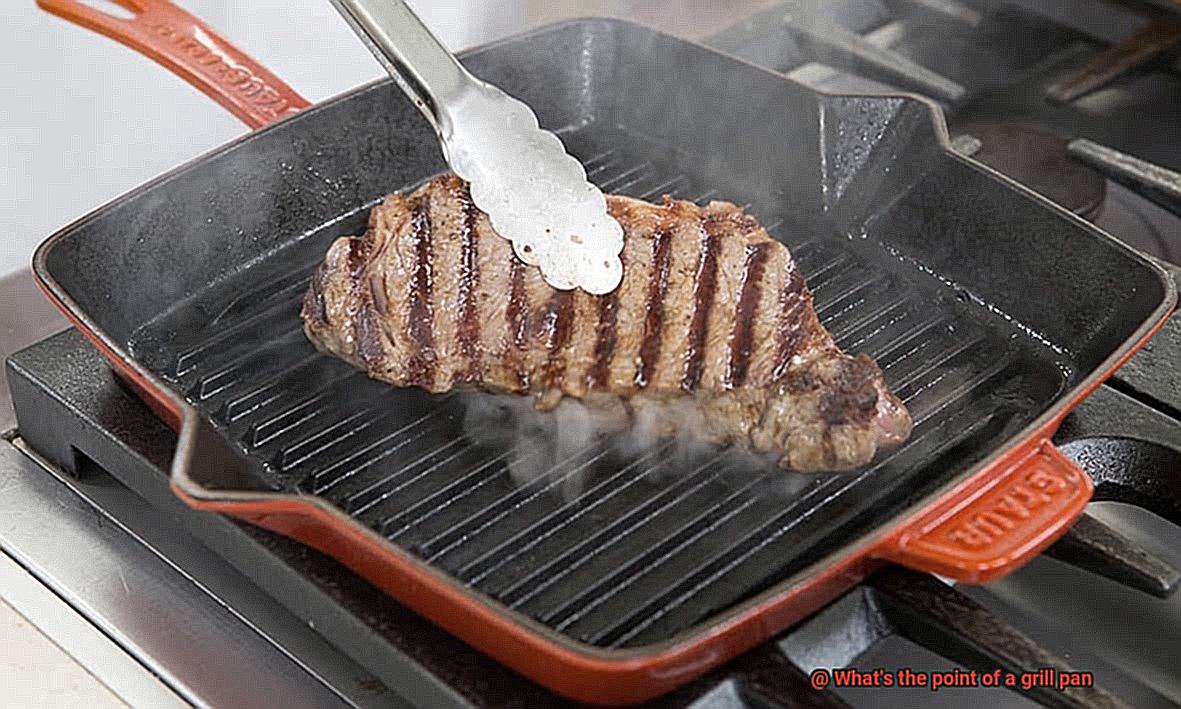
Let Your Food Cook Undisturbed
Finally, resist the urge to constantly flip or move your food around in the pan. Let it cook undisturbed for a few minutes on each side to allow those beautiful grill marks to form. Remember that grilled food will continue cooking even after it has been removed from the heat, so be sure to take it off the grill pan just before it reaches your desired level of doneness.
Tips for Cleaning and Maintaining Your Grill Pan
Grill pans are a kitchen staple for anyone who loves the taste of grilled food. However, to ensure the longevity and performance of your grill pan, it’s essential to clean and maintain it properly. Here are five tips to help you do just that:
Clean Your Grill Pan After Each Use
Cleaning your grill pan after each use is crucial to remove any leftover food particles. Once you’ve finished cooking, let your grill pan cool down before cleaning it. Using warm soapy water and a soft sponge or cloth, wipe away any food residue. Avoid using harsh abrasives such as steel wool or abrasive cleaners, as these can scratch the surface of your pan.
Soak Your Grill Pan If Necessary
For stubborn food residue on your grill pan, soaking it in warm soapy water for a few hours can help to loosen stuck-on food and make it easier to clean. This will also help to prevent any further damage to its surface.
Scrub with Baking Soda
Tougher stains or burnt-on food can be challenging to remove, but baking soda is a gentle abrasive that can help lift away stubborn stains without damaging the surface of your grill pan. Sprinkle baking soda over the affected area and scrub gently with a non-abrasive sponge or brush.
Avoid Using Metal Utensils
Metal utensils such as spatulas or tongs can scratch the surface of your grill pan, causing permanent damage. To avoid this, use silicone, wooden, or plastic utensils instead.
Dry Thoroughly After Cleaning
After cleaning your grill pan, it’s important to dry it thoroughly with a clean towel or cloth to prevent rust and ensure its longevity. Store it properly by hanging it on a hook or stacking it with other cookware.
WNBWpKCm0Zc” >
Conclusion
In summary, a grill pan is a must-have kitchen tool for any cooking enthusiast or culinary expert. It provides numerous advantages over traditional grilling methods, such as the ability to grill all year round, healthier cooking options, and the flexibility to cook a variety of dishes while creating beautiful grill marks. Grill pans come in various shapes and sizes, including cast iron, non-stick, stainless steel, and electric. Each type has its unique characteristics and benefits.
To utilize your grill pan effectively, it’s essential to select the appropriate type of pan based on your requirements, season it properly before use, preheat it over medium-high heat for at least five minutes until hot enough to sear your food perfectly. It’s also important not to overcrowd the surface with food to ensure even cooking and proper browning. Let your food cook undisturbed for a few minutes on each side.
Cleaning and maintaining your grill pan is also vital to ensure its longevity and performance. After each use, wash the grill pan with warm soapy water using a soft sponge or cloth. If necessary, soak it in warm soapy water or scrub it with baking soda for tougher stains. Avoid using metal utensils that can scratch the surface of your pan and dry it thoroughly after cleaning to prevent rust.
Investing in a high-quality grill pan is an effortless way to achieve that delicious grilled flavor without leaving the comfort of your own home. So why wait?

